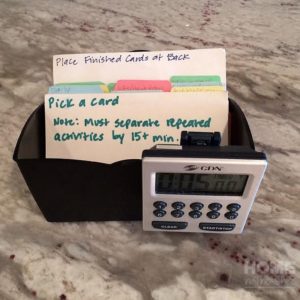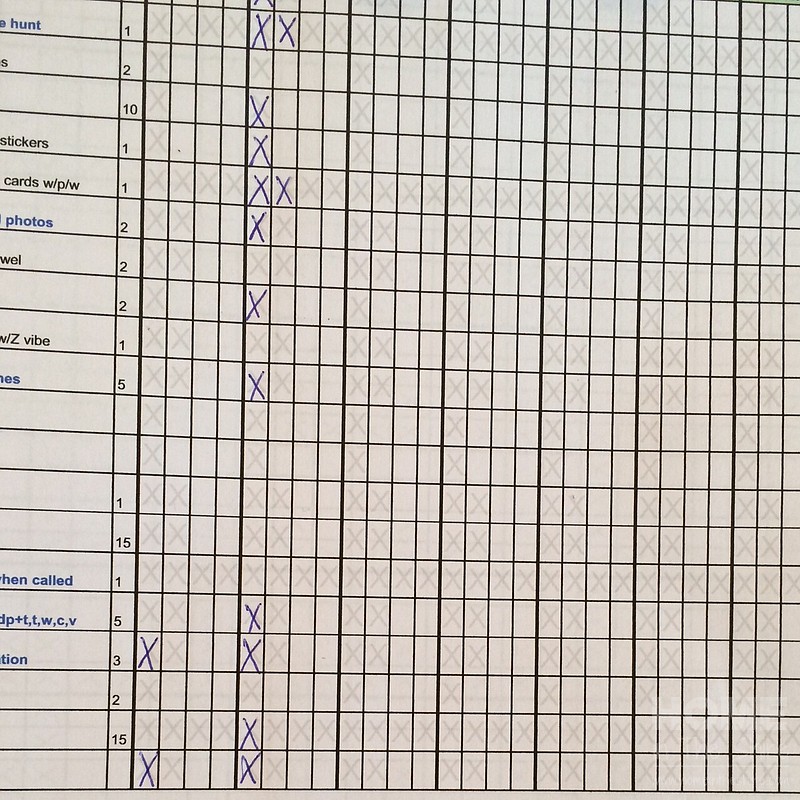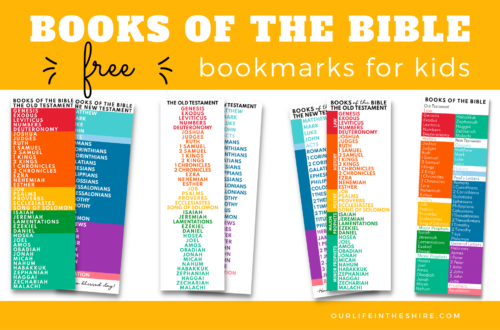Lily’s Therapy Program and a Checklist
The majority of Lily’s therapy is an at-home Neurodevelopmental (ND) program through ICAN. Other programs are NACD and IAHP. Some suggested reading to learn more are How to Teach Your Baby To Read, Fit Baby, Smart Baby, or any of the Doman books. We chose ICAN because there was a therapist who travels to our area. I also appreciate that it’s a Christian organization.
A couple times a year we meet with our therapist so that she can evaluate Lily’s progress and modify our program. Throughout the months between evaluations we are in communication via email or telephone, where we discuss progress and any changes that might need to be made to the program. Prior to this we saw private therapists for speech and OT, as well as monthly appointments with the county-provided Early Intervention program. The one thing that really stood out for me after our first meeting with our ND therapist was how she seemed to really care, and just as important, didn’t put the stereotypical limitations on Lily that so many traditional therapists do (either subtly or overtly). She talked about Lily’s future as you would any child’s future. I love the ND approach! The only downside is that it is quite time intensive.
Organizing Our ND Day
It can be difficult to fit the program in each day. If we go anywhere, like for a playdate or an appointment, it can feel practically impossible. I am learning to incorporate certain activities into our daily routine. For example, we recently added Gemiini (which I love!) to our routine. It is not technically part of our ND program, but it’s something our therapist recommends and I have seen definite improvements in speech and communication. So, mealtime has become Gemiini time. Another example of how I tie program to daily routine is doing flash cards first thing in the morning, before nap, after nap, and before bed. It’s on our program 4x per day, so it works out perfectly! I keep the stack of flash cards on her dresser, so it’s convenient and easy to remember. Just cause she’s so cute, I’m sharing a video where we play a game with her flash cards. She’s 3 1/2 years old in this video.
**Due to recent experience with stolen images, I have removed personal photos and videos.**
I think that incorporating program into what we are going to do every day anyway has been the single best way for me to fit program in. Although I do the majority of her program myself, I want to make it easy for my husband or son, or anyone else, to help with therapy. Whether it is just me doing it or someone helping, I find it helpful to have a visual to keep me on task. I know others who use a checklist app on their phone, which I think is a really cool idea. However, for me, things that are a lot of effort can easily be “out of sight, out of mind”. So, if I don’t have something on my counter reminding me to get it done, it’s easy to get off track.
The following checklist is my latest attempt at staying on task. Most of our program can be completed in only 5 days, but since I rarely do 100% of program in any given day, I feel compelled to list 7 days on the checklist. Someday maybe I’ll be so efficient and organized that I can actually take 2 days off from our program each week! lol I also like that I can see at a glance which activities I might be neglecting throughout the week, and hopefully get motivated to focus on getting them done the rest of the week.
A friend asked for a copy this template. I can’t share our specific therapy program, but if it helps anyone else I’m happy to share this blank checklist as a “template”. It’s an excel spreadsheet. Just fill in your own therapy activities and put an “X” in each box to represent the number of times each activity is on your plan. I made the font gray so that I can just write over it, and quickly see how much is left for each day. The column labeled D is for “duration”, or how many minutes each activity should take. I literally just started using this today, so I can’t share anything about how effective it will be.
Until today I’ve been using an index card box. I list each program activity on a card, complete with detailed instructions (to make it easy for anyone to jump in and do therapy), and then file them with tabs. Anyone who wants to help with therapy can pull a card and do it. Then they move the card to the back of the box. At the end of a day when I’m feeling motivated and organized I take the finished stack, check off what was done on our record sheet, then re-file the cards. On a more typical day, I take the entire stack of cards and move it to the front of the box. Haha.
 Anyway, feel free to download the files below to make your own checklist 🙂
Anyway, feel free to download the files below to make your own checklist 🙂
Those of you also on an ND program, I’d love for you to comment and share how you fit your program into your day! I need all the ideas I can get 🙂





